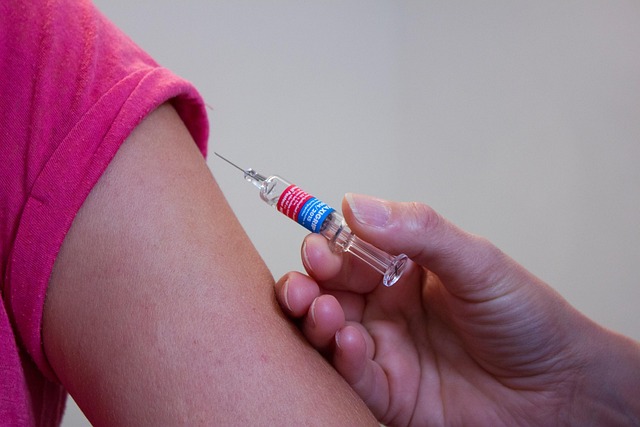Non-Surgical Nose Reshaping in Japan — Subtle, Safe, and Quick
In Japan, non-surgical nose reshaping has become an increasingly popular option for those seeking subtle facial enhancements without the need for surgery. This minimally invasive procedure uses injectable treatments to smooth contours, lift the bridge, or correct minor asymmetries in a matter of minutes. It is typically performed in a clinical setting with little to no downtime, making it suitable for individuals looking for natural-looking results. Understanding how the procedure works, who is a suitable candidate, and what to expect during recovery can help you make an informed decision about this non-invasive option.

How Does Non-Surgical Nose Reshaping Work in Japan?
Non-surgical nose reshaping in Japan typically involves the use of dermal fillers, most commonly hyaluronic acid-based products. These fillers are strategically injected into specific areas of the nose to achieve the desired shape and contour. The procedure begins with a thorough consultation, where the practitioner assesses the patient’s facial structure and discusses their aesthetic goals. Using precise injection techniques, the filler is then carefully administered to address issues such as a low nasal bridge, minor bumps, or slight asymmetries.
The entire process usually takes between 15 to 30 minutes, depending on the extent of the reshaping required. Patients can often see immediate results, with the final outcome becoming more apparent as any minor swelling subsides over the following days. One of the key advantages of this method is its reversibility; in the rare case that a patient is unsatisfied with the results, the filler can be dissolved using a specialized enzyme.
Who Is a Good Candidate for Non-Surgical Nose Treatments?
Ideal candidates for non-surgical nose treatments in Japan are individuals looking for subtle enhancements to their nasal appearance without undergoing surgery. This procedure is particularly suitable for those who:
-
Have minor nasal imperfections they wish to correct
-
Desire a higher or more defined nasal bridge
-
Want to smooth out small bumps or irregularities
-
Seek to improve slight asymmetry in their nose
-
Are looking for a temporary solution before considering permanent surgical options
It’s important to note that non-surgical nose reshaping is not suitable for major structural changes or functional improvements. Patients with significant nasal deformities, breathing issues, or those seeking dramatic alterations may be better suited for traditional surgical rhinoplasty.
What Are the Benefits and Limitations of Non-Surgical Nose Treatments?
Non-surgical nose treatments offer several advantages over traditional rhinoplasty, making them an appealing option for many individuals in Japan. Some key benefits include:
-
Minimal downtime: Patients can usually return to their daily activities immediately after the procedure.
-
Quick results: The effects are visible almost instantly, with full results apparent within a week.
-
Lower risk: As a non-invasive procedure, it carries fewer risks compared to surgical alternatives.
-
Reversibility: If unsatisfied, the effects can be reversed by dissolving the filler.
-
Cost-effectiveness: Generally less expensive than surgical rhinoplasty, especially for minor corrections.
However, it’s crucial to understand the limitations of this approach:
-
Temporary results: The effects typically last 6-18 months, requiring maintenance treatments.
-
Limited scope: Major structural changes or functional improvements cannot be achieved.
-
Potential for slight widening: Adding filler may subtly increase the width of the nose in some cases.
-
Not suitable for all nose types: Some nasal shapes or concerns may not be effectively addressed with fillers.
What to Expect During and After the Procedure?
During the non-surgical nose reshaping procedure in Japan, patients can expect a relatively comfortable experience. A topical anesthetic may be applied to minimize discomfort, and the injections themselves are generally well-tolerated. The entire process is typically completed within 30 minutes, allowing patients to return to their daily activities immediately afterward.
Post-procedure, some minor swelling, redness, or bruising may occur at the injection sites, but these effects usually subside within a few days. Patients are advised to avoid touching or applying pressure to the treated area for the first 24-48 hours to allow the filler to settle properly. Most individuals can see the final results of their treatment within a week, as any residual swelling resolves.
How Much Does Non-Surgical Nose Reshaping Cost in Japan?
The cost of non-surgical nose reshaping in Japan can vary depending on factors such as the clinic’s location, the practitioner’s expertise, and the amount of filler required. To provide a general overview, we’ve compiled a comparison of some reputable clinics offering this service:
| Clinic Name | Location | Estimated Cost (JPY) | Treatment Duration |
|---|---|---|---|
| Tokyo Beauty Clinic | Tokyo | 50,000 - 100,000 | 30-45 minutes |
| Azabu Skin Clinic | Tokyo | 60,000 - 120,000 | 20-40 minutes |
| Osaka Cosmetic Surgery | Osaka | 45,000 - 90,000 | 25-35 minutes |
| Fukuoka Beauty Center | Fukuoka | 40,000 - 80,000 | 30-40 minutes |
Prices, rates, or cost estimates mentioned in this article are based on the latest available information but may change over time. Independent research is advised before making financial decisions.
It’s important to note that while non-surgical nose reshaping is generally more affordable than surgical options, the temporary nature of the results means that maintenance treatments will be required to sustain the effects over time.
In conclusion, non-surgical nose reshaping in Japan offers a safe, quick, and subtle alternative for those seeking minor nasal enhancements. While it has limitations compared to surgical procedures, its minimal downtime, immediate results, and reversibility make it an attractive option for many individuals. As with any cosmetic procedure, it’s crucial to consult with a qualified practitioner to determine if this treatment is suitable for your specific needs and goals.
This article is for informational purposes only and should not be considered medical advice. Please consult a qualified healthcare professional for personalized guidance and treatment.




